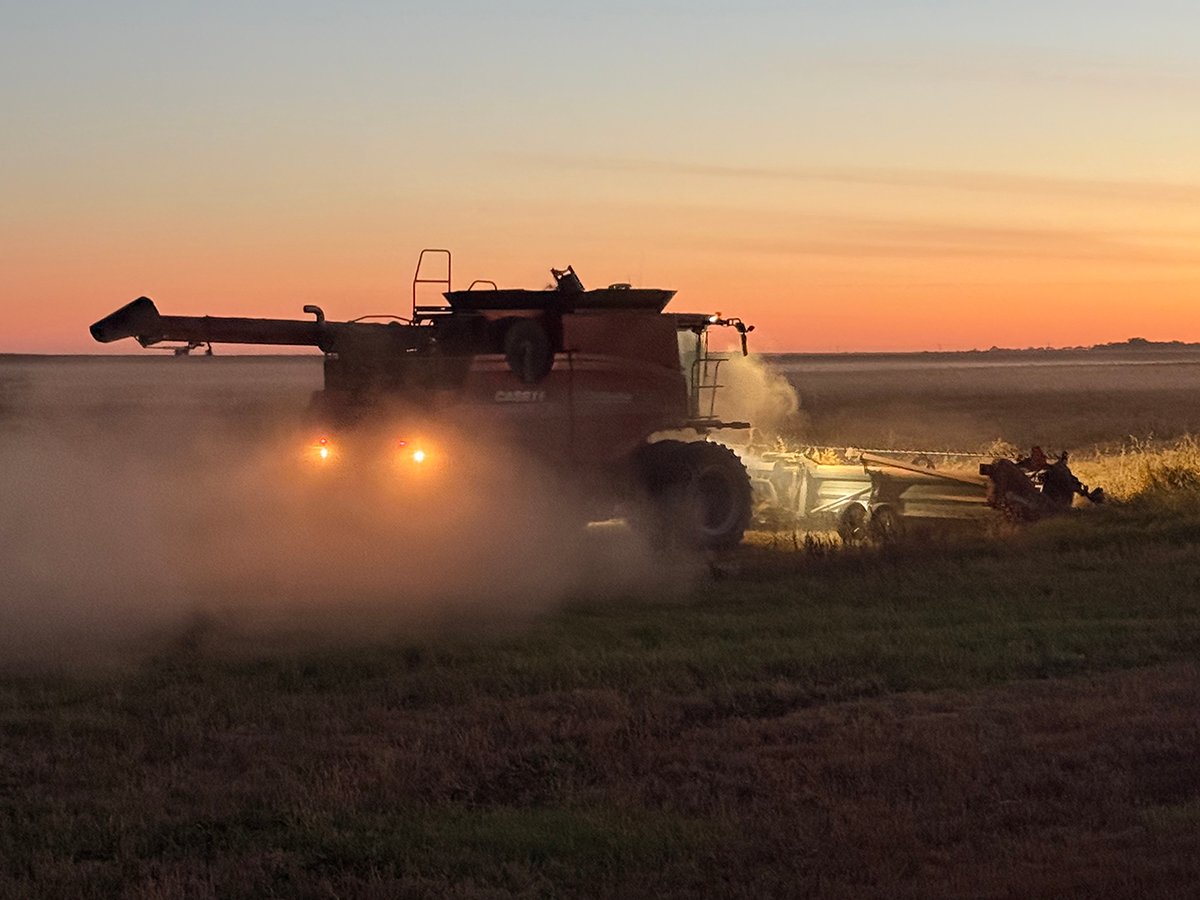Otto is president of the Western Barley Growers Association. He is from Warner, Alta.
Some exceptional things are happening in barley markets.
The Canadian Wheat Board reported record pooled prices for malt barley along with record exports for the 2008-09 crop year. It was truly a banner year.
According to the CWB year-end presentation, “producers’ pooled earnings for malting barley are the highest ever: $5.37 per bushel in Saskatchewan, $5.54 in Manitoba and $5.57 in Alberta (after freight and handling deductions) – up about four percent from the previous year.”
Read Also

Downturn in grain farm economics threatens to be long term
We might look back at this fall as the turning point in grain farm economics — the point where making money became really difficult.
What’s missing is a discussion about how the CWB has turned away from pooling barley, both malt and feed.
To me, this is the big story.
On Jan. 29, barely halfway through the crop year, the CWB announced it would not accept further selections for the 2008-09 malt barley pool.
It also stated that it would be making only limited sales in the pool for the remainder of the year.
CashPlus would be the marketing vehicle of choice by the CWB for the rest of the year. The CWB closed the pool early.
The purpose of this strategy, a clear departure from one of the foundations of the CWB, was apparently to “help protect relatively high current pooled values.”
Something similar happened to the feed barley pool. Although the CWB didn’t close the feed barley pools, it favoured operating outside of them.
The CWB has not said what business was done through the feed barley pool, but we know from trade sources that it cash traded practically all feed barley for export last year outside the pool.
This is a departure from a basic element of the CWB’s foundations. In its description of pooling, the CWB states “the goal is to optimize the total net returns for each of the pool accounts for the crop year.”
I am not arguing in support of pooling. I am arguing for clear messaging from the CWB.
When the CWB is doing so much of its barley business outside of the pool, it should be more open with total sales returns, not just pool returns.
It doesn’t mean much to say the pool return was a record when virtually all the business done in the second half of the crop year was outside the pool and, according to the CWB, at prices significantly lower than the pool return.
Who does it serve when the CWB brags about the pool return when it’s only part of the picture? Who does it serve to close the pool at record high prices half way through the year?
Certainly not those farmers who sold malt barley after Jan. 29. The price of equal treatment at the hands of the CWB was very high to many.
The year started with a malt pool return outlook of $7.84 per bu. at export position, announced in February 2008. This is important information for farmers at a critical time. This early PRO is the only malt barley price signal available to farmers when they are deciding what crops to grow.
When it was released, this was an excellent price compared to other cropping options and I know a lot of farmers grew barley last year because of it.
But it didn’t last. By Jan. 22, the PRO had dropped to $6.97 per bu., still a very good price, historically speaking, but almost $1 per bu. lower than what was indicated earlier.
Although it can be lower or even much lower than the first PRO released, the PRO is still the basis of farmers’ expectations for their crop. When it comes to malt barley, their whole crop.
Exactly one week later, the CWB announced the pool would be closed. Now the only option left for malt barley producers is a CashPlus contract at roughly $4.30 per bu. net back to a farmer in Saskatchewan, provided that the producer could find someone to buy the malt barley.
This is more than $1 per bu. lower than the pool that was just closed. At the same time, feed barley in Saskatchewan was about $2.70.
Since seeding time, the malt barley “opportunity” for many farmers dropped by well over $2 per bu.; more like $4 for those forced to sell malt barley as feed.
What made matters worse was that closing the pool goes against the message we’ve always heard from the CWB.
According to the CWB website, “price pooling shares the market risks among all western Canadian farmers by giving each farmer his or her fair share of the highs and lows of the marketplace.”
We can’t trust the CWB on that one anymore. If the CWB continues to promote pooling as a risk management tool by evening out price volatility, it will fall on deaf and skeptical ears.
Picture this. The CWB was looking at record high pool returns when it closed the pool to “help protect relatively high current pooled values.” If the pool had remained open, the additional sales that were made since January would have pushed the pool return lower, but it would still have been a well above average year.
If pooling is such a great idea, why has it fallen into such low regard by the CWB when it comes to barley? The fact of the matter is that mandatory pooling doesn’t work in barley.
We need price signals at seeding time that can be locked in. We also need a market structure that we can depend on; one that won’t change part way through the year. We need meaningful price signals throughout the year, not PROs on non-existent pools.
What we need is an open market in barley. An open market would allow the CWB to participate with voluntary pooling or cash trading, whatever it chooses.
Then if the CWB decided to change its programs part way through the year, we’d still have viable market structures and prices that can be relied upon.
The biggest story in barley from last year is that the CWB is finally getting it – pooling doesn’t work for barley.
Let’s just hope they understand it well enough to do what’s right for the whole barley sector: make barley an open market.
















